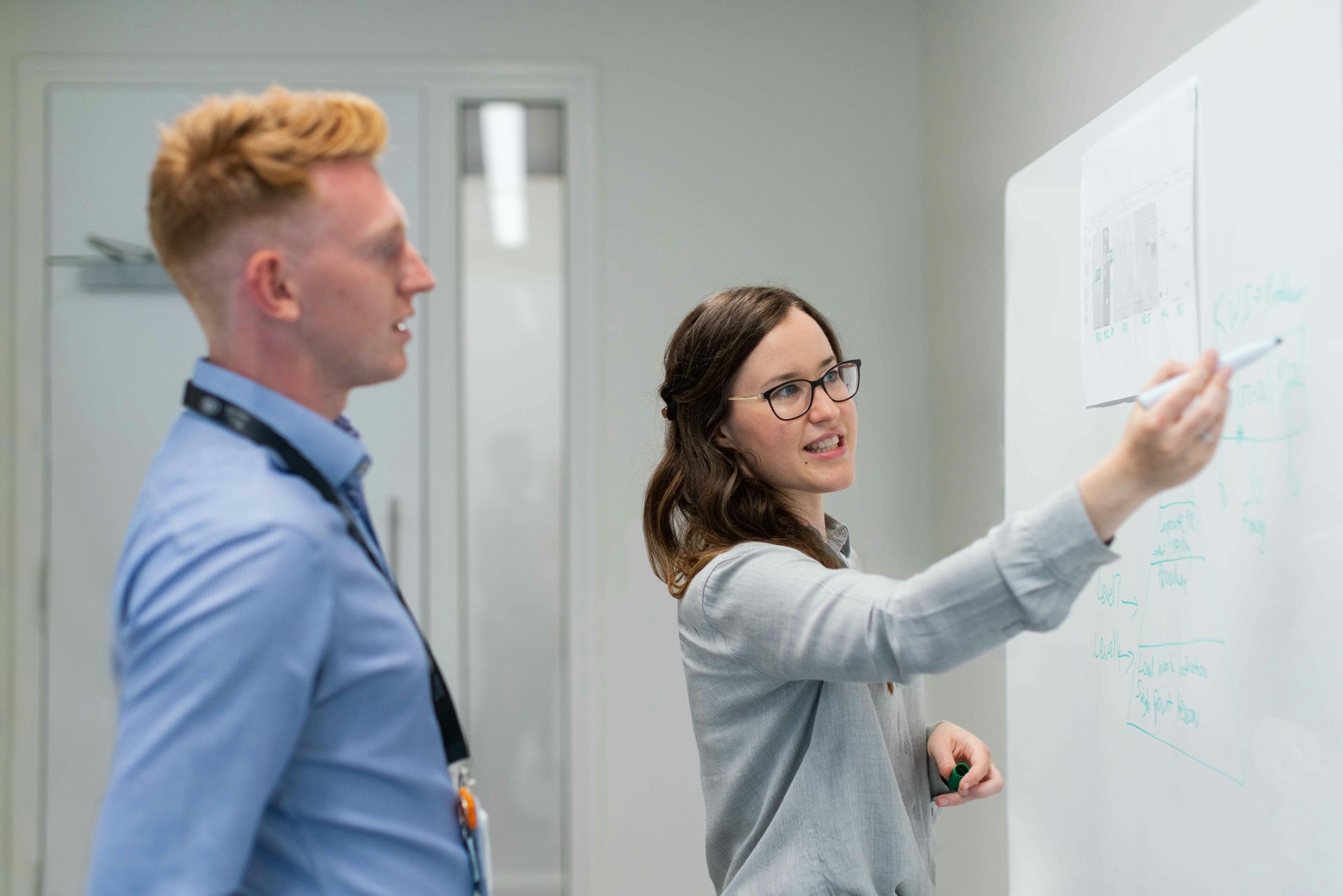Chapter 9 – Collaboration
When reviewing the Individuals with Education Act (IDEA; 2004), it is evident that collaboration is a requirement for developing Individualized Education Programs (IEPs), providing a free and public education (FAPE), and considering the least restrictive environment (LRE). Without collaboration, special education services come to a standstill. This collaboration must happen not only within schools, but across school divisions, and with parents and applicable outside agencies. A team approach ensures that students receive the placements, interventions, accommodations, and/ or modifications they need, but this can only happen when every team member has a voice (Walker et al., 2021).
Key constructs in the definition of collaboration include open communication, trust, mutual respect, shared goals, common understanding, shared responsibility, active participation, and shared decision making (Griffths et al., 2020). These constructs include other important features to include effective ways to resolve conflict, respecting cultural differences, mutually agreed upon goals and outcomes, and consensus in decision-making (Jenkins & Murawski, 2023). While all of these components may be difficult to achieve in all relationships, they should be the targeted “gold star” of collaboration.
In school settings, collaboration will likely occur in three major areas to include professional teams (to include administrators), families, and colleagues. Regardless of the parties involved in collaboration, the exchange of ideas increases success for the student at the center of the conversations. If the strengths of individual members of the collaborative team can be highlighted, outcomes will improve.
Collaborating on Professional Teams
When collaborating with a professional team, the first and most effective step is to define roles and responsibilities (Cole-Lade & Bailey, 2020). Roles describe an individual’s position on a team (e.g., general educator, special educator, principal), while responsibilities describe the actions one is expected to take to achieve the team’s goals (Jenkins & Murwaski, 2023). In some cases, responsibilities are clearly aligned with specific roles. In other cases, responsibilities may be unclear or distributed across multiple team members. Once team members understand their responsibilities, subsequent meetings and task assignments move more smoothly.
The delivery of special education and related services requires a well coordinated dance involving many professionals in a school setting. Each member of the team should clearly understand what they are responsible for and how completion of those responsibilities is to be documented. When moving through eligibility, IEP development or review, data collection, or any other special education process, shared decision making and implementation across a team will not only support the student, but also ensure the requirements outlined in IDEA are followed. Consider the following when collaborating with teams:
- Delineate roles and responsibilities within the team. Understand who is responsible for implementing interventions, services, accommodations, and/or modifications. In addition, decide who will collect data and when it will be reviewed. A new special education teacher who does not feel empowered on a team may simply ask, “Who on the team can help collect data on this goal?” or “We will need to monitor this intervention across settings to be in compliance with the IEP. Where, when, and how will we be collecting this data?” Knowing each individual’s role and responsibilities can also help the team when unexpected or novel situations arise and support is needed. Knowing how each team member can provide support allows for quick decision-making and a solution based approach.
- Schedule time to communicate. Although meetings may be regularly scheduled for IDEA compliance reasons, this should not be the only time the team is communicating. Set regular meetings to check in with the team and discuss student progress, challenges, achievements, data, and or concerns. These don’t have to be long meetings, but a scheduled time to communicate, even just a 15 minute check-in will promote increased collaboration. Teams can also use creative communication strategies when it is difficult to find common meeting times (Jenkins & Murawski, 2023). Meetings can occur through group messaging tools or video-conferencing platforms. Communication can also occur through low-tech systems. One example is using a team notebook to document observations, ask questions, or share ideas. As long as each team member is aware of the communication plan and regularly engages in using the tool, these creative systems can be quite effective.
- Remember, the IEP is a living document. Given that a student’s IEP should be monitored continuously, conversations about goals, interventions, and/or accommodations shouldn’t take place just once a year during the required yearly update of the IEP. These conversations should be ongoing. As special education related meetings arise, teams should already be well-versed about the student and team members should be consulted prior to the student’s eligibility and IEP meetings. It is also the special educators responsibility to ensure all team members know and understand the purpose of upcoming IDEA related meetings.
- Families are part of the team. According to IDEA, family involvement is expected in all special education related processes. Family specific suggestions are included below, but it should be noted that family members are an equal and important part of the student’s team.

Collaborating with Families
While collaborating with families is required per IDEA, this collaboration is also beneficial to supporting students with their academic achievement, behavior, and goals. By including family members as valuable contributors on a student’s educational team, there is greater likelihood that the goals, instruction, services, and learning outcomes will be aligned with the student’s experiences beyond the school building (Jenkins & Murawski, 2023).
There are many ways teachers can collaborate with families, to include soliciting their input on plans and goals, working together to meet student goals, and supporting the IEP writing process. However, these relationships don’t happen overnight. Most teachers will report that the smoothest relationships with families include elements of respect, trust, and keeping what is best for the child at the center of discussions. These elements can be built by ensuring that families are informed about student progress, communicating positive accomplishments, and opening lines of communication to share concerns and feedback. Teachers should focus their efforts on maintaining a judgment free zone during communication and partnering with families for the benefit of the student. As a teacher consider the following points:
- During conversations and correspondence, use jargon free language. Education, especially special education, is riddled with acronyms and technical language. Explain and check in for understanding when using legal or technical terms.
- Empower families to be part of the process. While it is often easy to “stay in our lane” and teach students and let families parent, we are all working together for the whole child. Ask families for their opinions or suggestions, give them a voice at the IEP table, and be understanding of their own challenges with the student.
- Make families feel welcome. Value and recognize the knowledge and experiences families bring to the table. Keep in mind that parents and guardians may not be familiar with policies or procedures and want to advocate for their child. Use caution when making assumptions about families and instead, welcome them into the process.
- Value the contributions of families. Instead of focusing on a top-down approach in which educators tell family members what to do, work together with families to acknowledge how they are supporting their children. Consider how family values or strategies used with children at home may contribute to growth in school. Use an iterative process to understand ways the school and the family can work together towards common goals.
Collaborating with Colleagues
Teachers and school staff who work together in a collaborative way often report more satisfaction with their job (Albrecht et al., 2009). A special education teacher can expect to work with general education teachers, paraprofessionals, and related service providers while providing special education related support for students. While teaching is often a solo profession, working together towards a common goal gives teachers the opportunity to share responsibilities and ideas. While this should occur with all teachers and school staff, it is especially important for educators (e.g., teachers, paraprofessionals, related service providers) who provide direct support to students who are receiving special education services. There are many opportunities for colleagues to collaborate.
- Attend professional development together. When colleagues who work together attend professional development as a team, they are able to make applicable and more appropriate decisions about effectively using the information learned from these training sessions. In particular, co-teachers can greatly benefit from attending professional development together. Information can be analyzed, discussed, and applied using a team approach.
- Work to understand others’ perspectives. Each educator or related service provider comes into education with varying educational experiences, personal viewpoints, and levels of teaching experience. Colleagues may not always agree, but professionals can work to understand perspectives, which may help develop understanding and address misconceptions. Given the importance of implementing IEPs as written, professionals must reconcile their differences for the benefit of the student (Walker & Barry, 2020). Even with differing views or perspectives, professionals should continue to put the student’s success as the central focus.
- Step out of your comfort zone. While each professional has specialized training and areas of expertise, it is often helpful to support one another through shared responsibilities. For example, if a related service provider suggests a specific strategy would be beneficial for a student in the classroom, a special educator may need to learn new skills to implement those strategies. This may require specialized training or even practicing the strategy implementation with support from the related service provider to ensure fidelity. This transdisciplinary collaboration often results in professional growth for the educators and better outcomes for students (Jenkins & Murawski, 2023). Special educators may also need to step out of their comfort levels and take on leadership roles, especially when it comes to ensuring a student’s IEP is implemented.
- Talk with each other, not about each other. One of the quickest ways to break down trust and respect with a colleague is by talking about them instead of with them. It should be expected that some team members may disagree with one another, and it’s possible that some team members may not particularly like one other, but respecting one another is imperative for success. Should two team members come to an impasse where communication is stalled, reaching out to a trusted mentor for advice, or utilizing a full team approach for decision-making may be helpful. Remember, it is the special educator’s responsibility to put the student first.

